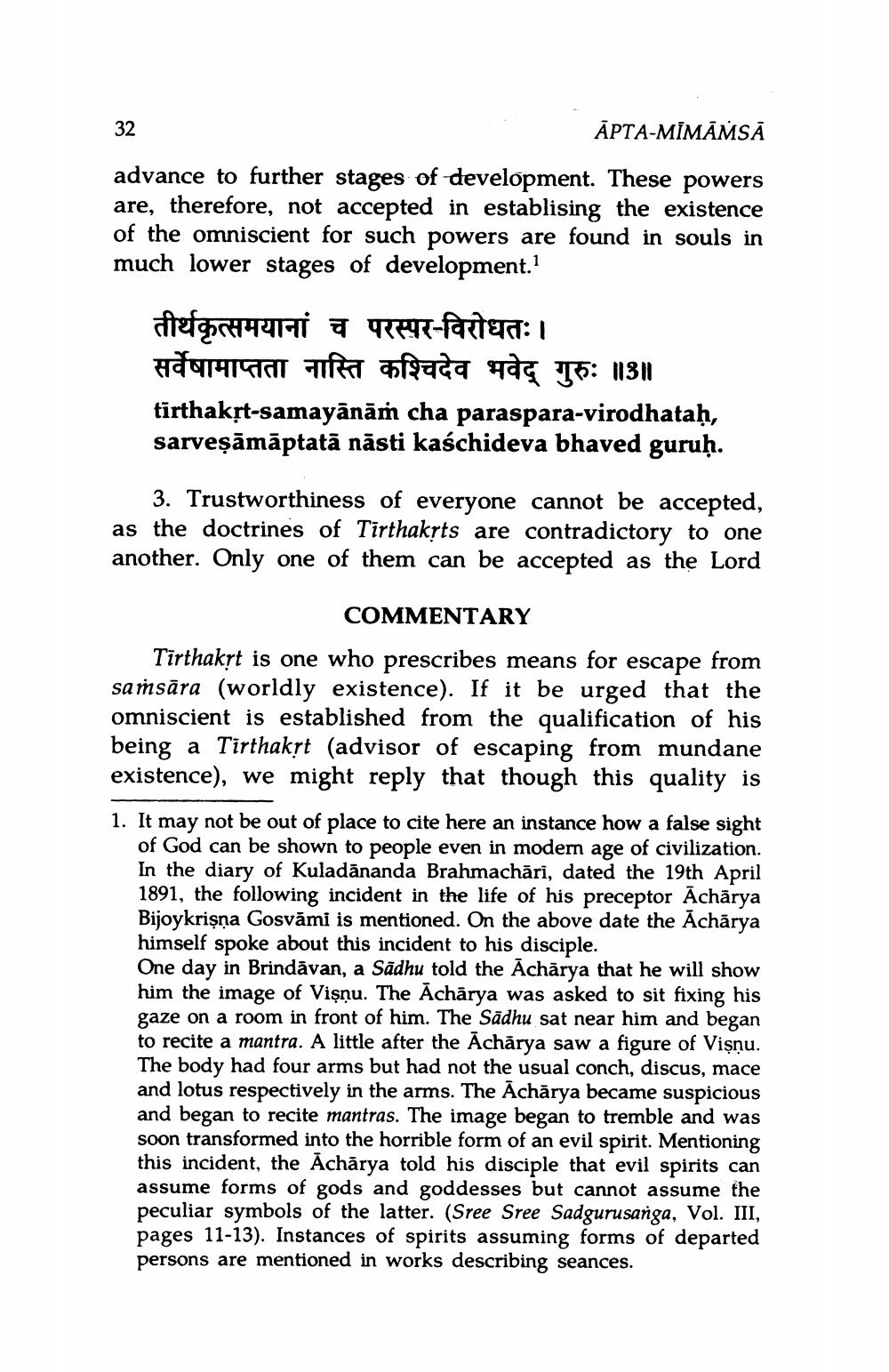________________
32
ĀPTA-MĪMĀMSĀ
advance to further stages of development. These powers are, therefore, not accepted in establising the existence of the omniscient for such powers are found in souls in much lower stages of development.1
तीर्थकृत्समयानां च परस्पर विरोधतः । सर्वेषामाप्तता नास्ति कश्चिदेव भवेद् गुरुः ॥3॥
tirthakṛt-samayānāṁ cha paraspara-virodhataḥ, sarveṣāmāptatā nāsti kaśchideva bhaved guruḥ.
3. Trustworthiness of everyone cannot be accepted, as the doctrines of Tirthakṛts are contradictory to one another. Only one of them can be accepted as the Lord
COMMENTARY
Tirthakṛt is one who prescribes means for escape from samsara (worldly existence). If it be urged that the omniscient is established from the qualification of his being a Tirthakṛt (advisor of escaping from mundane existence), we might reply that though this quality is
1. It may not be out of place to cite here an instance how a false sight of God can be shown to people even in modern age of civilization. In the diary of Kuladananda Brahmachari, dated the 19th April 1891, the following incident in the life of his preceptor Acharya Bijoykriṣṇa Gosvāmi is mentioned. On the above date the Acharya himself spoke about this incident to his disciple.
One day in Brindāvan, a Sādhu told the Acharya that he will show him the image of Viṣņu. The Acharya was asked to sit fixing his gaze on a room in front of him. The Sadhu sat near him and began to recite a mantra. A little after the Acharya saw a figure of Viṣṇu. The body had four arms but had not the usual conch, discus, mace and lotus respectively in the arms. The Acharya became suspicious and began to recite mantras. The image began to tremble and was soon transformed into the horrible form of an evil spirit. Mentioning this incident, the Acharya told his disciple that evil spirits can assume forms of gods and goddesses but cannot assume the peculiar symbols of the latter. (Sree Sree Sadgurusanga, Vol. III, pages 11-13). Instances of spirits assuming forms of departed persons are mentioned in works describing seances.




